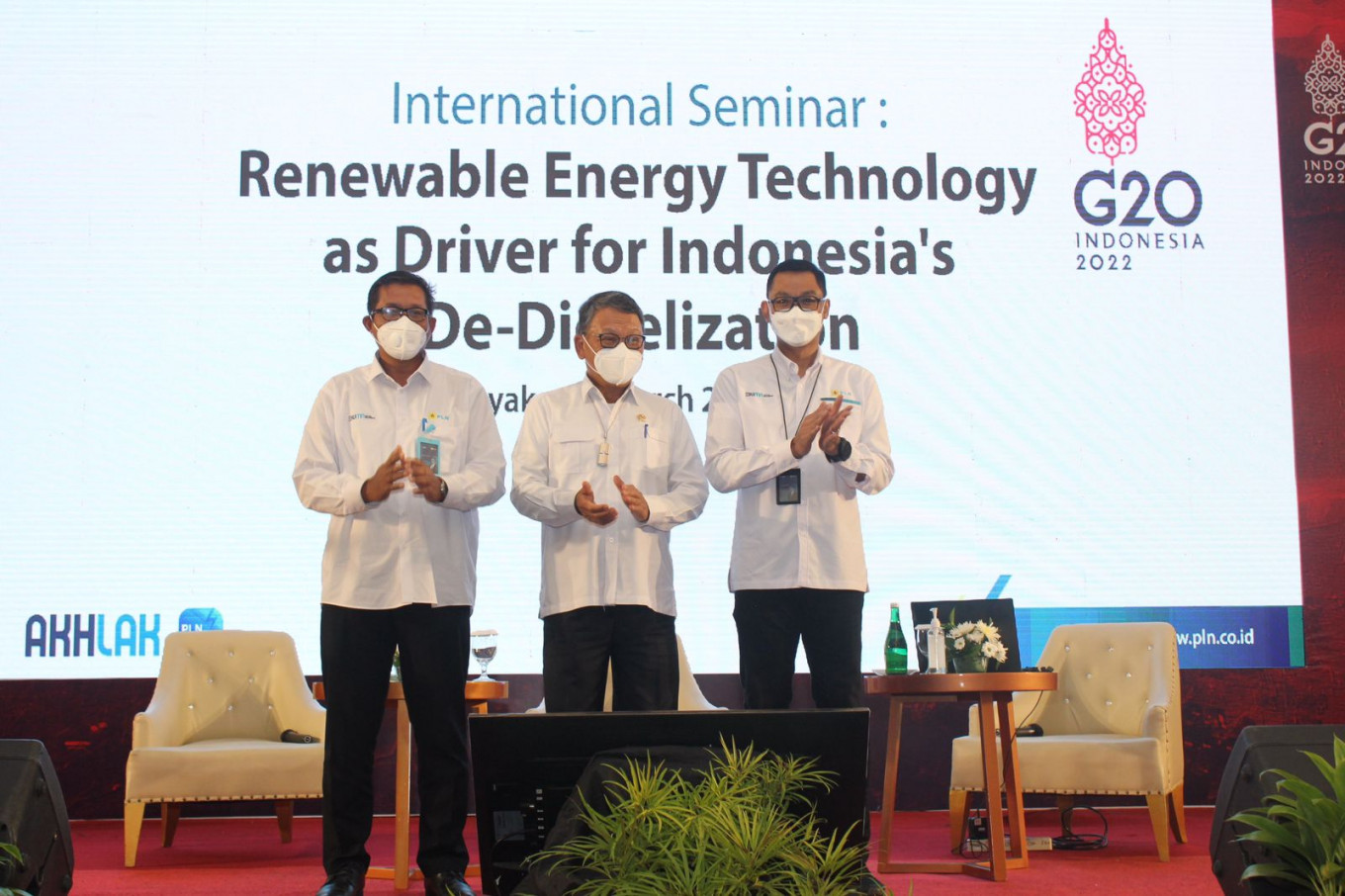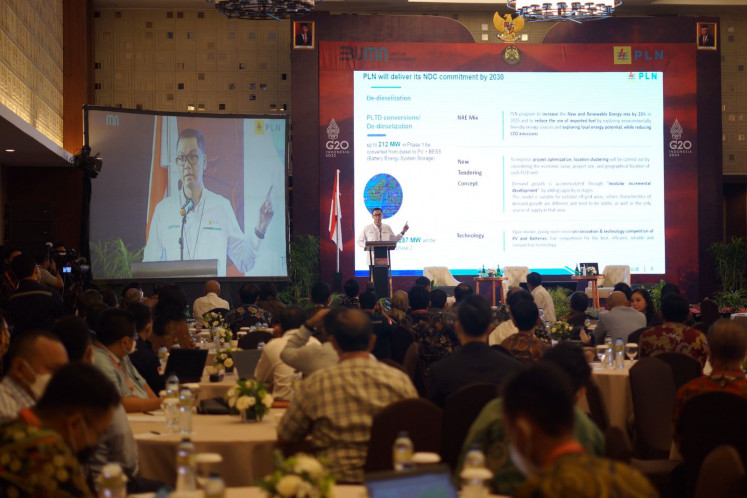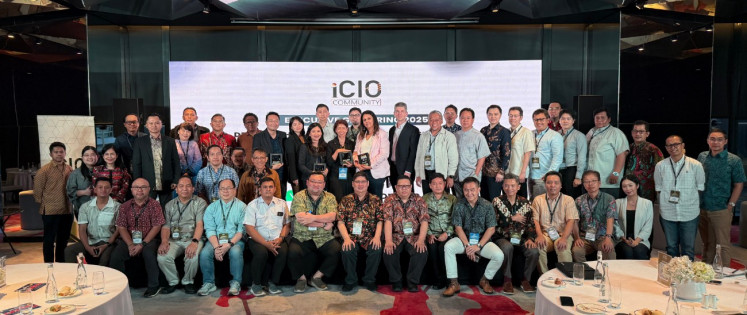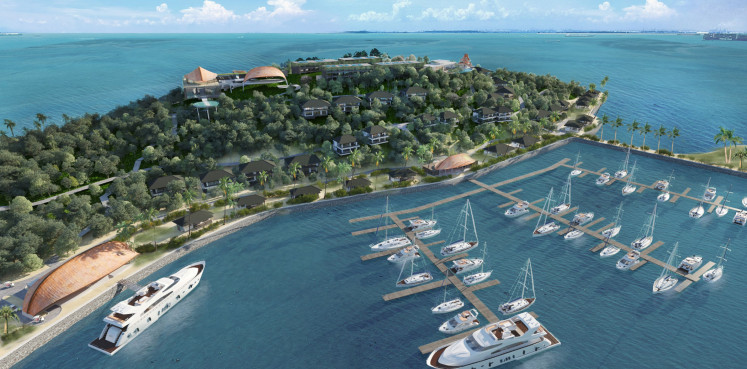Popular Reads
Top Results
Can't find what you're looking for?
View all search resultsPopular Reads
Top Results
Can't find what you're looking for?
View all search resultsPLN’s move from diesel will lead to net-zero carbon emissions
Change text size
Gift Premium Articles
to Anyone
I
n order to reduce carbon emissions and accelerate the shift to green energy, PLN has launched a “de-dieselization” program by converting around 5,200 diesel power plants (PLTD), which are currently still operating in remote areas all over the country. The aforementioned PLTD will be converted to new renewable energy-based plants (EBT).
Energy and Mineral Resources Ministry Arifin Tasrif reiterated that this was a key program in the road map that has been drawn up by the ministry to reduce greenhouse gas emissions to achieve the net-zero target by 2060.
"This de-dieselization program is a small step by PLN, but will be a big leap in achieving the government's target of NZE 2060," he said at the International Seminar: Renewable Energy Technology as Driver for Indonesia's De-dieselization, during the Energy Transition Working Group (ETWG) meeting, in Yogyakarta on Wednesday.
He credited three schemes that have been carried out by PLN regarding the program, highlighting the system integration scheme previously supported by the PLTD into the main electricity system of PLN. He also mentioned his hope of building transmission lines to connect to every island, in order to unify the country with EBT sources.
Deputy State-Owned Enterprises Minister Pahala N. Mansyuri echoed the statement about the importance of the program as a step toward realizing Indonesia’s vision to become the fifth-largest economic power in the world by 2045. To achieve this vision, Indonesia must be able to increase its energy supply while still meeting the decarbonization targets that have been previously set.
"How should we continue to grow in a sustainable manner. De-dieselization will show how Indonesia is able to increase national energy capabilities in a sustainable manner," said Pahala.
PLN president director Darmawan Prasodjo said that amid rising world oil prices, the transition of energy from import-based to domestic must be made immediately in order to protect the country’s foreign reserves, among other benefits.
Currently, PLN is opening an auction for replacing PLTD with solar power plants (PLTS) and batteries. PLN will convert up to 250 megawatts (MW) of PLTD spread across a number of locations in Indonesia. The conversion to PLTS will produce a new battery that can power a generator for up to 24 hours, more efficient than its predecessor. PLN encourages participants to increase innovation so as to create efficient batteries that operate reliably.
"PLN continues to be committed to making a clean energy transition in the country as an effort to create a better future. In addition, this is also support for Indonesia's commitment as the host of the G20 Summit to realize net-zero emissions by 2060," said Darmawan. "Whichever technology is the most reliable and efficient is the best, so that wins. This builds innovation."
With the conversion to PLTS and batteries, the installed capacity in this first stage can reach around 350 MW. It is hoped that this will be enough to boost the renewable energy mix and increase the installed capacity of national generators.
While PLN is still in phase two, it plans to convert the remaining PLTD of about 338 MW in the next phase, in accordance with the natural resources that are superior in the area and the most economically viable. Darmawan explained that he hopes to complete this target by 2026.
"This de-dieselization program can save 67,000 kiloliters of fuel. In addition, the emission reductions achieved can reach 0.3 million tons of CO2 and increase to 0.15 percent of the energy mix," he said. Along with technological developments, he believes that the production costs of EBT plants in Indonesia will be more economical and reasonable compared with fossil-fuel plants.
In 2015, the price of PLTS output was set at 25 US cents per kilowatt-hour (kWh). The price can be reduced to around 5.8 US cents per kWh today. Currently however, the price is around 13 US cents per kWh.
"Technological developments and innovations are able to reduce the price of EBT plants. This answers the dilemma between clean but expensive energy or dirty but cheap energy. This can be answered, that within a period of time clean and cheap energy can be achieved," Darmawan said.
Furthermore, PLN has also collaborated with PT Perusahaan Gas Negara (PGN) to convert 33 PLTDs to gas in remote areas. PLN is replacing the PLTDs with gas-steam power plants (PLTGU).
In the company's Work Plan and Budget (RKAP) for 2022, the energy mix from gas plants at the end of the year is planned to be 18.76 percent, an increase from 18.1 percent in February this year. This increase comes from the PLTD de-dieselization program, which currently dominates the Nusa Tenggara region with a share of 65 percent, along with Maluku and Papua with a share of 85.9 percent.











